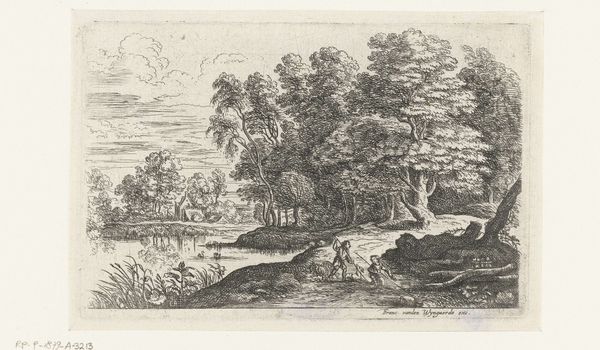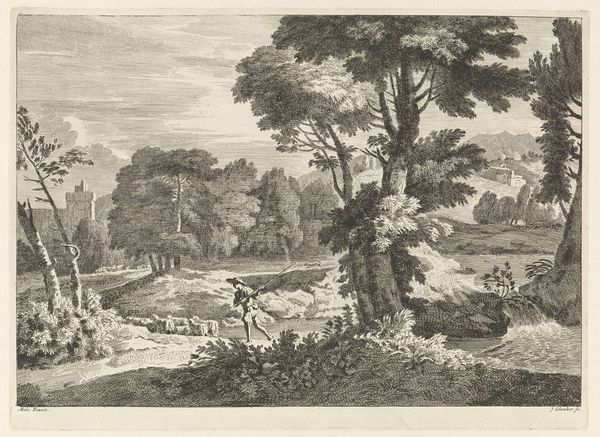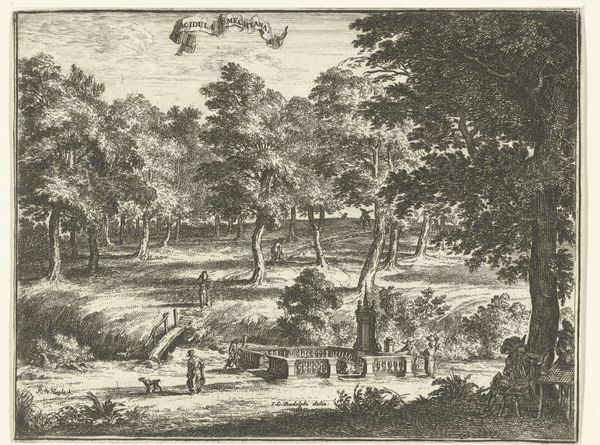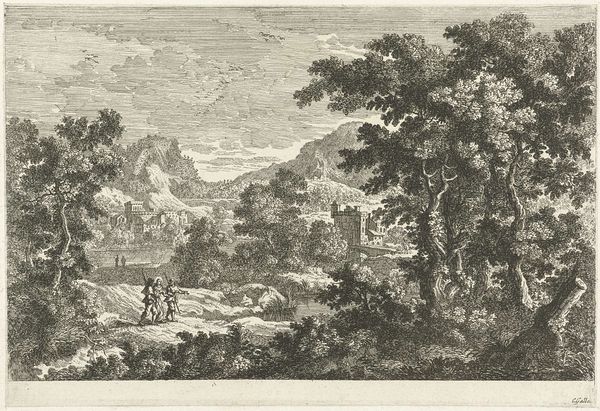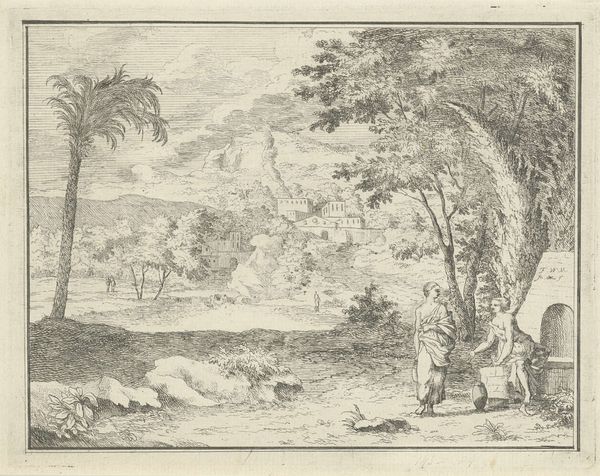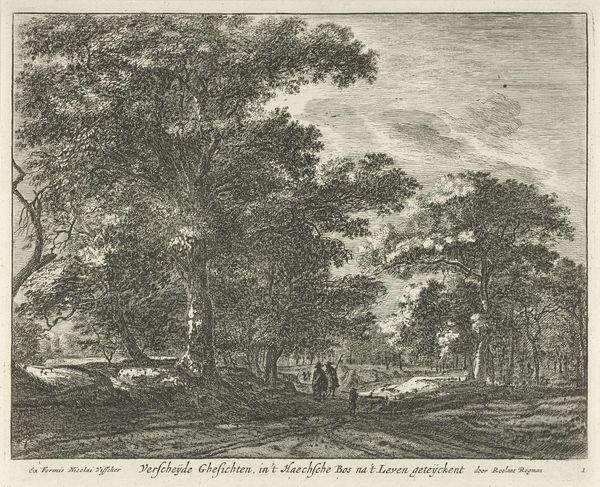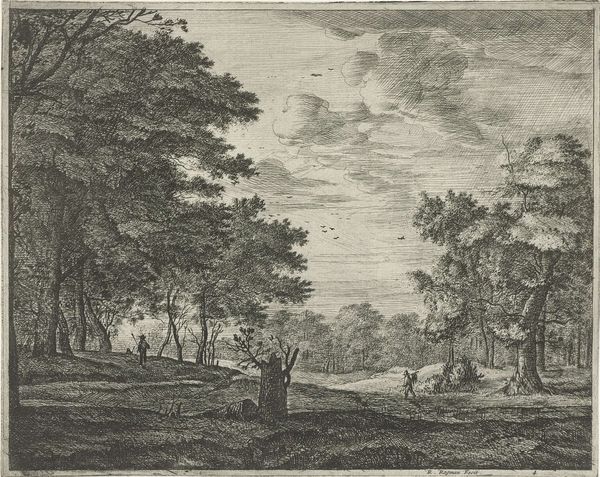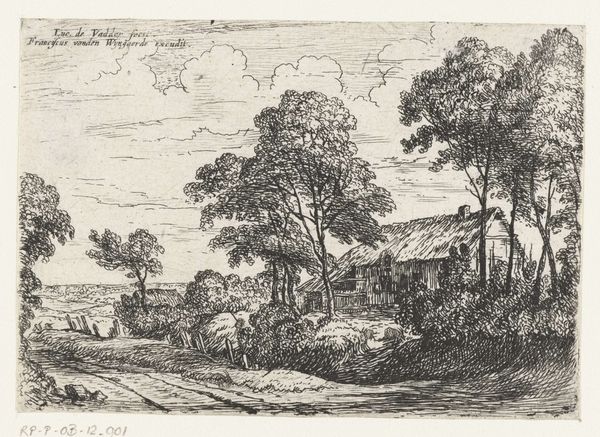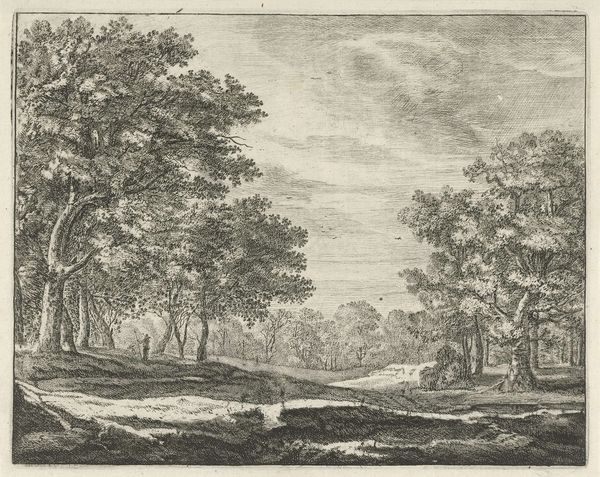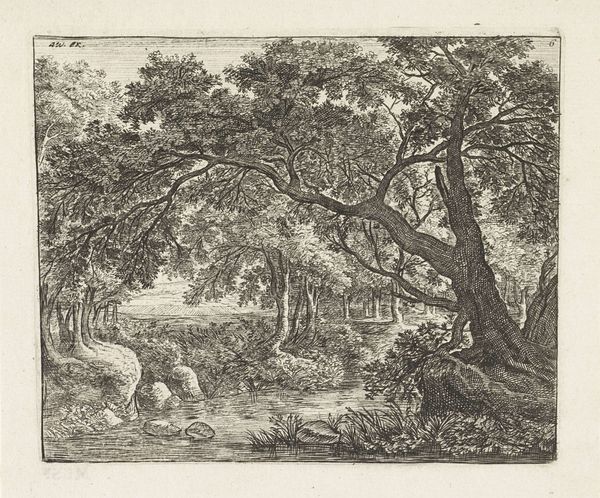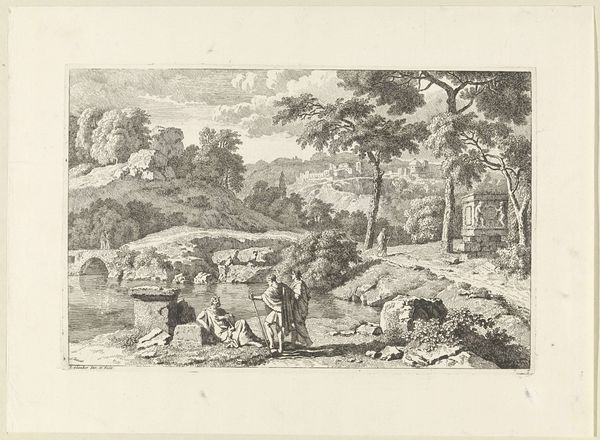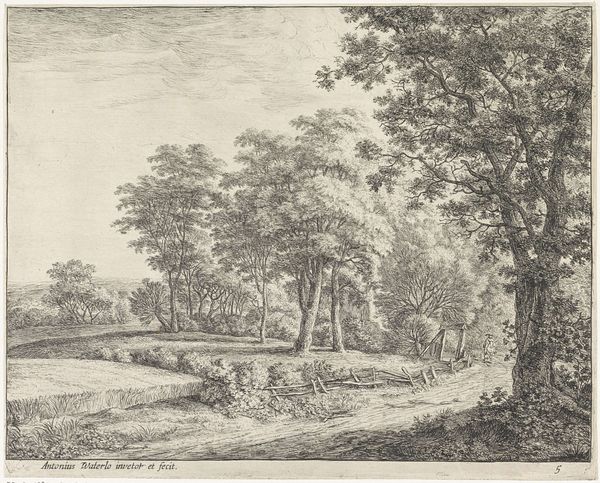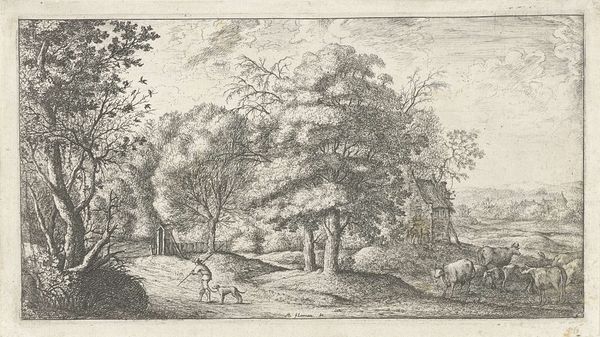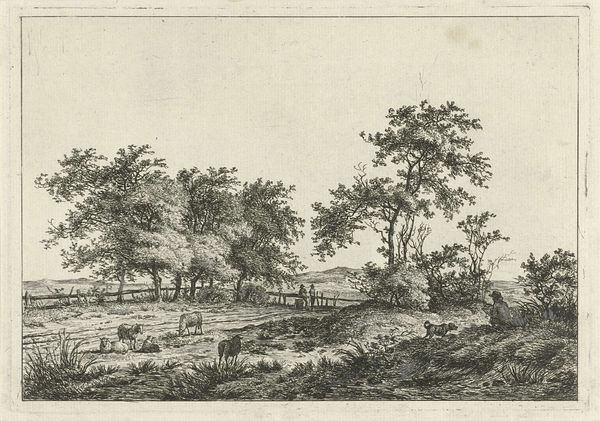
print, etching
#
baroque
# print
#
etching
#
old engraving style
#
landscape
#
pencil drawing
#
genre-painting
Dimensions: height 75 mm, width 98 mm
Copyright: Rijks Museum: Open Domain
Curator: Here we have "Landscape with a Ruined Bridge," an etching created by Lucas van Uden sometime between 1605 and 1673. Editor: My immediate reaction is that of stillness. It’s remarkably detailed for a print, yet possesses a certain quietude. The textures alone—the meticulously etched foliage and the rippling water—suggest a very somber, perhaps even melancholy, mood. Curator: The ruined bridge is a fascinating detail. In the 17th century, landscapes often carried allegorical weight. Ruins like this bridge could symbolize the transience of human endeavors and the inevitable decay of civilizations. Van Uden was likely playing into a familiar cultural trope. Editor: Precisely. See how the artist uses the bridge’s arch as a framing device, subtly leading the eye deeper into the landscape? The play of light and shadow creates depth and highlights the delicate textures that you have described, adding to this symbolic weight you've spoken of. Even without any figures present it invokes human history and influence. Curator: While aesthetically pleasing, landscapes of this type had significant economic and political functions. The elite, particularly landowners, used them as emblems of their status and dominion, shaping perceptions of their holdings as naturally beautiful and productive. Prints like these could also circulate ideals of rural life, reflecting particular societal values. Editor: I agree that the strategic placement of elements – like the barely visible dwellings beyond the trees, or the figures near the start of the bridge – directs the viewer’s gaze. This controlled gaze creates harmony while still guiding us through a picturesque landscape. And these delicate contrasts contribute to its melancholic power. Curator: Thinking about its place within art history reveals more: Dutch landscapes emerged as a powerful genre during this period. Landscape was increasingly freed from pure allegory to become an independent subject. The landscape literally becomes center-stage and it gives rise to the notion of "landscape for landscape’s sake". Editor: Ultimately, for me it’s the interplay between meticulous detail and overarching harmony, that quiet mood it generates. It is not dramatic, but instead draws the viewer into a very tranquil space for contemplation. Curator: Reflecting on our discussion, it's been helpful to revisit the various levels on which this piece functioned – not only an artwork but a social and historical artifact. Editor: Yes, seeing the harmony in composition is just one layer and opens onto societal reflection as well.
Comments
No comments
Be the first to comment and join the conversation on the ultimate creative platform.
